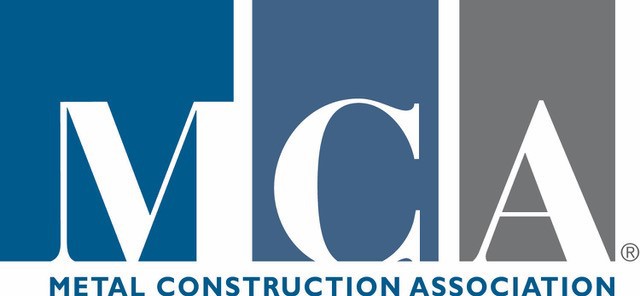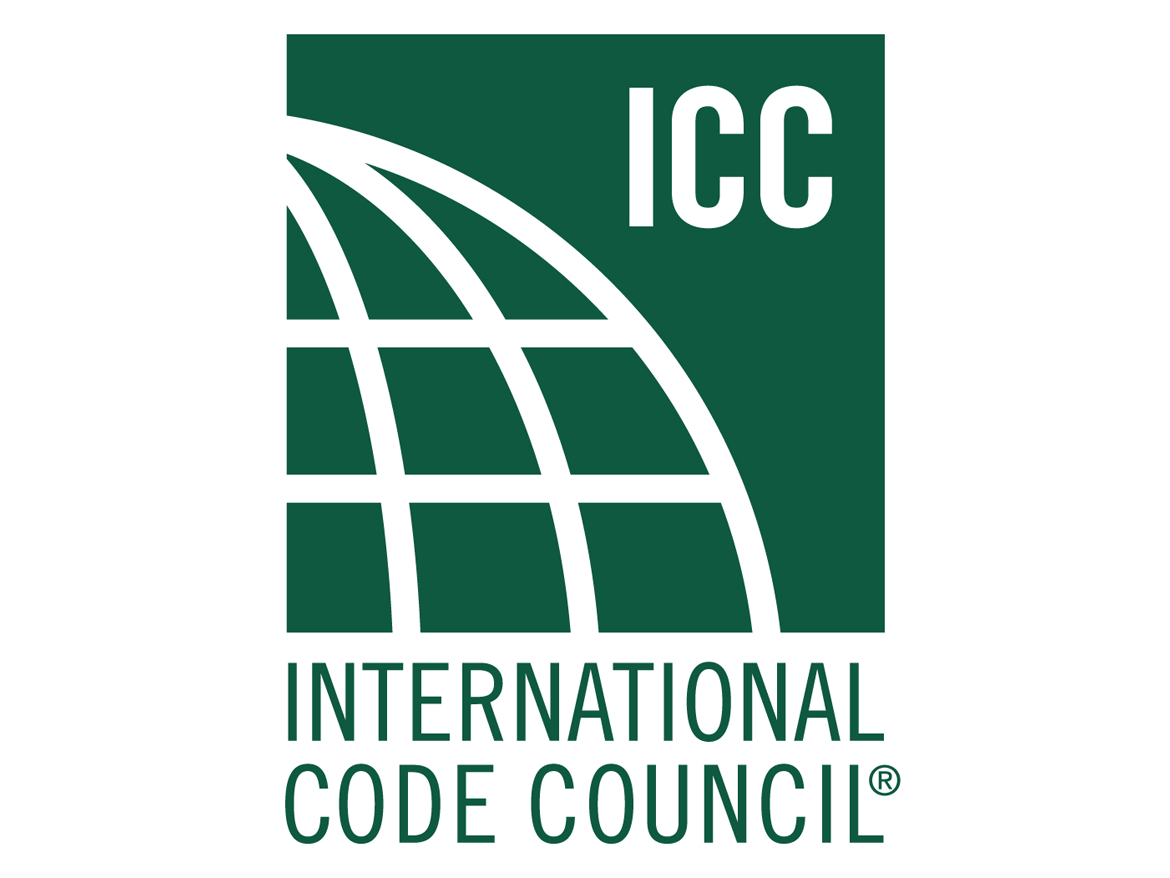The Metal Retrofit Revolution
Delivering longevity, durability, and great aesthetics, metal roofing and cladding panels are a popular choice for today’s retrofit and adaptive reuse projects
Sponsored by Metal Construction Association
This course is part of the Metal Architecture Academy
Long-lasting and durable with a great aesthetic, metal roof and cladding systems are a popular choice for today’s commercial and industrial buildings. While these products are in demand for new building projects, the lion’s share of activity is taking place in the retrofit market.

Photo courtesy of Metal Construction Association
A perforated and corrugated zinc retrofit envelope helped transform an industrial, turn-of-the-century building—once a bottle-storage facility for an adjacent brewery—into a prime example of innovative sustainable, adaptive reuse at 355 11th Street in San Francisco.
Let’s start with some terminology: What is the difference between retrofiting a roof and reroofing a roof?
Retrofitting is the installation of new roofing materials over existing roofing materials without removal of the original material.
Reroofing is the complete removal of the existing roofing materials and the installation of new roofing materials over a clean substrate of furring, decking, or purlins.
The applicable market consists of the residential sector and the commercial/industrial market. Residential buildings are typically high-slope, nonstructural roofing materials applied on a deck of furring or plywood. The commercial/industrial market is typically low slope with differing combinations of structural decking, insulation, and membranes or structural metal panels applied over open framing. Although the materials may look similar, the difference can be significant in several different ways (i.e., material type, material thickness, finish, structural spanning ability, and resistance to water intrusion).
When it comes to market size, Chuck Howard, PE, president, Metal Roof Consultants, Cary, North Carolina, writes in the RCI magazine article, “Stretching your Retrofit Dollars with Metal Retrofit,” replacement and repair account for approximately 75 percent of all roofing work, with about 30 billion square feet of roofs requiring major repairs every year, according to industry sources.

Photo courtesy of Drexel Metals, Inc.
Bringing new life to the Ocean City boardwalk is a bright-blue metal roof retrofit for the Surf Mall in Ocean City, New Jersey.
Furthermore, a national manufacturer of retrofit framing systems has identified one portion of the retrofit market—metal over metal—to be about 24 billion square feet of metal roofs ranging from 27 to 47 years old.
Emphasizing this, Brian Gardiner FRCI, RRC, CCS, BMG Enterprises, San Antonio, points out that the view over any cityscape will show a handful of buildings under construction. “Then compare that with the huge inventory of existing buildings that will eventually need another roof,” he says. “Reroofing/retrofitting of existing buildings substantially surpasses the amount of roofing installed on new construction.”
Acknowledging the “very healthy market” for roofing retrofits, Mark Sullivan, AIA, LEED AP BD+C, NCARB, partner, Joshua Zinder Architecture + Design, Princeton, New Jersey, says this is especially true for buildings with historic status or with a desirable aesthetic that cannot be preserved without the continued use of metal roofs.
But generally speaking, he states, “Replacing an existing metal roof with a new one ensures durability, a long roof life, and an aesthetic that no other material can replicate or match.”
Essentially, Tim Butler, AIA, Murphy Burnham & Buttrick Architects (MBB), New York, states, “Not only is this [retrofit/reroofing] cost-effective, enabling owners to reposition their properties within the marketplace, but it is also a sustainable approach that helps meet the ever-growing demand for new space.”
Retrofitting vs. Reroofing
In comparing retrofits and reroofing projects, each offers its own advantages and disadvantages.
For starters, retrofits enable the original roof to remain in place to both protect the building interior during the installation and allow building operations to continue. This strategy is less expensive, less invasive, and can be typically done at any time of the year.
Similarly, Andy Feth, P.E., DBIA, LEED AP, project executive, C.W. Driver Companies, San Diego, states, “There is always a market for retrofitting roofs as the original installation reaches the limits of its useful life. Also, with rooftop photovoltaic systems becoming more popular, some building owners may consider roofing retrofit projects sooner than later.”
Workers are afforded a safer work surface since they are walking on the old roofing, as compared to the open framing members like purlins and joists that workers must deal with when installing a new roof, explains Vincent E. Sagan, PE, senior staff engineer, Metal Building Manufacturers Association (MBMA), Cleveland. Furthermore, demolition waste and the need for a large laydown area for temporary storage of roofing materials is avoided.
“Retrofit takes full advantage of the existing insulation with the option of easily adding more insulation over an existing roof,” he adds.
Even uninsulated roofs still deliver an increased energy efficiency if the cavity between the old roof and bottom of the new metal roof is ventilated. In particular, above-sheathing ventilation (ASV) is recommended, and according to Oak Ridge National Laboratory research, it decreases heat gain through the roof assembly by as much as 30 percent in the summer and delivers a similar heat loss reduction in the winter. With the incorporation of a cool surface, this heat gain reduction can jump to as high as 45 percent.
Another advantage with retrofits is that the through-fastened metal roof system diaphragm remains in place, thereby maintaining the original structural diaphragm strength used to design the original structure.
“Without this lateral bracing, the secondary roof for a standing-seam type system then requires bridging or other types of bracing and possibly the addition of new framing to meet current wind-loading requirements,” explains Mark James, president, RetroSpec, Dallas. “Granted, if the new roof is a thru-fastened system, then remedial work may not be required for bracing the roof. However, building teams should still anticipate that additional framing may be required to meet current wind loading.”
“In any case, by simply overlaying a new roof over the old one,” Alex Getelman, executive managing director, MBI Group, New York, points out, “The infrastructure doesn’t have to be rebuilt. And if the old roof contains asbestos, retrofitting can be designed to take care of the issue, thereby avoiding the need for expensive removal and disposal.”
“Retrofitting also keeps the building weather resistant during the process, which is the main concern for keeping a building dry and intact,” he adds. “The new high-quality roof can support a building through the unusually strong storms we are now seeing so that the building will stay dry and safe.”
Along these lines, building owners can also take advantage of retrofit systems to correct any existing roof geometry that may be causing problems with roof drainage.
While there are real cost savings and benefits to retrofitting, other benefits include “eliminating potential unknowns all the way down to the substrate and being able to control the entirety of the roof assembly, attaining greater roof longevity, and possibly a longer warranty,” explains Jeffrey Murphy, FAIA, partner, MBB, New York. “It also allows troubleshooting any issues caused by previous water-infiltration and insuring that these are effectively repaired.”
“Spending the money to remove the existing material to get to a good, sound substrate for the new installation [reroofing] might be the wiser choice in the long run,” Feth adds.
With reroofing, the old metal roof can be recycled, design defects can be remedied, damaged insulation can be replaced, or new, higher R-value insulation can be added.

Photos courtesy of Drexel Metals, Inc.
By tearing off the existing metal panels and salvaging the existing insulation and metal zee purlins for this roofing retrofit project at East Lake High School in Tarpon Springs, Florida, the project team recycled 575,000 pounds of steel from the existing roof panels and saved $60,000 in salvage cost.
On average, older flat and sloped roofs only offer insulation values of R-6 and R-10, which is generally far below most locally adopted energy codes. In contrast, most building codes have minimum R-values of R-19 for metal roofing per ASHRAE 90.1 and the Federal Model Energy Code recommendations.
With regards to meeting current wind and code requirements, there is much easier access to the existing structure if modifications need to be made.
In many cases, the materials used for the reroofing/recover installation are lightweight, so structural modifications are frequently kept to a minimum or not needed at all to support the new roof.
The largest potential problem with reroofing, however, is the reality that when the old roof is removed, the building is susceptible to water intrusion until the new roofing materials are installed. Minimizing this risk can substantially slow the process of reroofing since only small areas can be done at one time.
Other issues can include larger laydown area, debris removal, and difficulty with equipment access.
Reroofing and Retrofit Types
Residential reroofing: In the residential market for reroofing, the options are fairly straight forward. This includes removal and replacement of shingles, roll roofing, tile, wood, stone, metal, or other similar materials.
It also includes the removal and replacement of the existing roofing and the installation of a different roofing material like metal panels, metal shingles, metal tiles, dimensional shingles, or other approved roofing material.
Residential retrofitting: This includes the installation of a new second layer of shingle roofing over an existing shingle roof, which is allowed in many municipalities.
This can also include the installation of a new material such as, metal panels, metal shingles, or other material over an existing shingle roof, roll roofing, or sloped built up roofing by furring above the existing material.
Commercial and industrial reroofing: This is most common in the conventional flat roofing market, which includes built-up, single-ply, and tar and gravel roofing systems. These systems are simply removed, hauled off, largely discarded in landfills, and reinstalled with similar or like-kind materials.
Metal roofing can be employed in this market, but it requires the construction of a structural framing system above the existing flat roof to create a pitched roof to which a new metal roof can be attached. This system can be invaluable for problematic roofs conditions and/or used to add aesthetics to an older, out-of-date building.
In the case of an existing low-slope metal roof, it can be reroofed using a like-kind roofing material. This means a low-slope screwdown metal roof can be reroofed by removing the existing screwdown panels and installing new screwdown metal panels. A new standing-seam metal panel would not qualify to be installed unless the existing roof being removed was a standing-seam roof and the new roof was the same as the old one.

Photo courtesy of McElroy Metal
A technical college building reaps the benefits of a sloped, light-gauge, steel-framed retrofit over an existing flat roof and new standing-seam metal roof.
Commercial and industrial retrofitting: Much of this market is low-slope roofing, the vast majority of which are metal roof systems.
Typically this involves placing a sub-framing system over the existing roof panels and into the structural supports—purlins or joist beneath. The attachment of a new metal panels into the sub-framing system correctly transfers the roof loads to the existing structure. The sub-framing systems available include hat channel over hat channel, up slope cee or zee members with hats over, and notched zees that fit directly over the existing panel ribs. These systems are typically installed on the exterior of the building roof, allowing for an upgrade from screwdown roofing to standing-seam roofing, and the addition of more insulation without major structural modifications.
Recently, many retrofit projects have been undertaken using single-ply, thermoplastic polyolefin (TPO) systems with additional insulation over existing metal roof buildings. This assembly typically consists of a layer of insulation over the existing metal roof panels and then a layer of single-ply TPO membrane over the insulation. The insulation and membrane are mechanically fastened to the existing roof using metal strips connected to the existing purlins. Once mechanically fastened, the membrane seams are heat-welded together. The systems may be adhered to the insulation and/or existing metal panels.

Image courtesy of Roof Hugger
This diagram shows a single-ply TPO membrane installed over a metal retrofit assembly. Both the insulation and membrane are mechanically fastened to the existing roof using metal strips connected to the existing purlins and then the membrane seams are heat welded together.
Commercial and Industrial Reroofing and Retrofit Design Considerations
When embarking upon a reroofing or retrofit project, there are numerous aspects that must be carefully evaluated, but Gardiner characterizes the most important as those associated with life safety. “The existing structure and roofing requires evaluation for live, dead, and drag loads to determine if retrofit solution will meet local building codes.”
For example, consider a retrofit using a single-ply membrane roof over an existing metal roof. Not only is the load path and metal substrate’s strength/stiffness different from original design, but the latest codes may also require higher load path values, explains Gardiner in a recent white paper, “Comparison of Retrofit Systems Over Existing Metal Roofs,” for MBMA. “Existing secondary structural members may require reinforcement at purlin laps and other structural modifications,” he writes.
Additionally, the deflection criteria used for a metal building is less than that for conventionally roofed structures due to the weight of the materials used. This can create water flow issues when single-ply roofing is installed over existing metal panels. Water sheet flows across single-ply roofs, unlike metal panels where the ribs channel the water to the eave. Structural failures have resulted when water was allowed to pond on TPO covered metal roofing.
Fire ratings may also be affected as metal panels are considered noncombustible, unlike single-ply roofing materials. It’s important to confirm that the building’s fire rating will not be adversely affected by use of singly-ply system.
Gardiner also recommends performing a design review of the retrofit roof field, perimeter, and corner zones to both ensure the code compliance of the new roof system for both wind and snow loadings and to ensure that the existing structure is suitable to withstand the new higher loads.
Confirming these comments, Getelman lists the main existing design aspects that must be considered prior to a retrofit as the underlayment, flashing details, and cost of the different roofs along with their respective longevity, durability, maintenance, and sustainability factors.
When recovering an existing metal roof system, it is important to consider the age and type of structure being re-covered, according to Sagan.
For example, an existing metal building with cold-formed steel secondary structural members and a 24-gauge or thinner metal panel roof system is designed much differently than a conventional structural steel-framed building with cambered bar joists and a 22-gauge or thicker steel deck.
In addition, the condition of existing mechanical equipment and vent/piping penetrations needs to be taken into consideration and replacement of new membrane terminations must be considered as well.
Summing it all up, Gardiner offers the following recommendations to building teams undertaking single-ply over metal roof retrofits:
- Engage a licensed professional engineer practicing structural engineering with knowledge of metal buildings to evaluate the unbalanced loads and potential water accumulation on a single-ply retrofit roof with respect to structural capacity and drainage provisions.
- Consult with the local building official, a licensed professional engineer or practicing structural engineering, and the single-ply roof manufacturer to confirm that the existing building’s metal roof is adequate to perform as a structural deck for a non-metal sheeted roof.
- Implement quality control during construction to ensure that single-ply membrane fasteners driven through insulation board layer(s) are properly engaged into secondary structural members.
Incorporating Insulation, ASV, Solar, and Heat Recovery System with Metal Roofing Retrofits
Insulation
One of the many benefits of metal retrofits is the opportunity to incorporate additional insulation, ventilation, photovoltaics, and/or solar heat recovery into the roofing system.
When retrofitting one roof over another, it is relatively easy to control the depth of the new cavity, and thus a greater depth of insulation over the existing roof can be installed, further increasing the R-Value of the roof and increasing its overall energy efficiency.
ASV
Oak Ridge National Laboratories has tested the affect of incorporating an air space between new and old roofs and the energy saving advantages of venting of that cavity. A 2012 research paper titled “The impact of Above Sheathing Ventilation on the Thermal and Moisture Performance of Steep Slope Residential Roofs and Attics” by William A. Miller, Ph.D., demonstrates that as much as a 30 percent reduction in heat transference can be realized by incorporating a minimum 1-inch air space between the new and old roofing.

Photos courtesy of Roof Hugger, LLC
For this metal-over-metal reroofing project at North Windy Ridge in Weaverville, North Carolina, custom-made sub-purlins provide convective ventilation through the air space between the existing and new roofs.
Solar
When using a standing-seam metal roof with a photovoltaic (PV) system, building projects can potentially qualify for federal solar-energy tax credits, including a rebate of 30 percent of the entire system cost, an accelerated depreciation schedule, and a 50 percent first-year bonus depreciation with the balance depreciated over the following five years.
Another important feature is the service life of a metal roof, which is significantly longer than a PV system. Dismantling the modules because the roof must be replaced is seldom an issue. Furthermore, MCA reports that mounting a solar system on a sloped metal roof can provide savings of 24 to 43 percent, as compared to a conventional roof system.

Photos courtesy of McElroy Metal
A retrofit installation and 500 kW solar project on McElroy Metal’s manufacturing facility in Peachtree City, Georgia, generates power that is sold back to Georgia Power, the regional utility provider.
Heat Recovery
Heat recovery can also be incorporated. These systems collect radiant-heated air and redistributes it to the building’s existing HVAC system with the assistance of a looped tubing system that carries water glycol fluid heated by the sun’s radiant heat. The solar heating can then be used to heat the building or provide hot water. To heat water, swimming pools, and/or process equipment, tubing can be routed to heat exchangers located in tanks or other types of vessels.

Photo courtesy of Metal Construction Association
Solar-thermal technology was integrated into the retrofitted 11,900-foot metal roof cavity to optimize the energy generated for domestic hot water and for space heating at Goodfellow AFB in San Angelo, Texas.
Metal Roofing Advantages Recap
Service life: Metal has the longest service life of any roofing material in the market today. This also means the lowest life-cycle cost of any roofing material. In fact, painted metal roofs demonstrate an average service life of 41.6 years, as compared to only 23 years for modified bitumen and built-up roofing, according to Ducker Worldwide research. Additionally, it has been demonstrated that low-slope, unpainted, 55 percent AlZn-coated metal roof systems have a service life of at least 60 years, according to a peer-reviewed study sponsored by MCA and the ZAC Association.
Strength and testing: Metal roofing undergoes one of the most rigorous test protocols in the roofing industry, the E-1592 test. This air-pressure test places the panels in a large 10-foot by 20-foot chamber and increases the static air pressure beneath the panels until failure, often explosively. The failure point is measured and a factor of safety from 1.65–2.0 is applied to establish a working load for the panel. The inherent strength of the metal roofing material and the aggressive testing used explains why metal is quickly becoming the material of choice for roofing. In fact, Monroe County, Florida, considered a “metal-only” roofing ordinance for all residential roofing.
Material weight: Steel and aluminum roofing are not only strong but also lightweight. This means the supporting structure does not have to support the significant weight of conventional roofing systems that incorporate structural decking, membranes, and frequently ballasts to hold the membrane in place. This makes the overall cost of a steel-roofed structure significantly less expensive.
Fire resistance and fire ratings: Metal roofing is a noncombustible material, which can be an important design consideration when the structure is in a fire-prone area. It can also be important in commercial and industrial applications where zoning districts are frequently divided into various fire districts with certain minimum fire resistance ratings. Stone-coated metal roof tiles are now frequently used in residential application for their documented fire performance.
Driving it Home
In summary, retrofitting with metal has long been an effective renovation strategy and is even more relevant today. Whether boosting the integrity of the building envelope and/or updating the look of an older building to compete with newer buildings on the market, metal roofing retrofits are a most valuable economic strategy.
In the final analysis, MCA’s “Retrofit Roofs Offer Design, Environmental, and Financial Benefits in New and Existing Construction” white paper states, “Metal retrofit has been a quick, cost-effective solution for problematic roof geometry, maintenance issues, and outdated appearance. In more recent years, thermal efficiency and energy savings are the hallmarks of a retrofit roof application. In addition, retrofitting has become an intricate part of building repurposing and renovation.”
The Metal Construction Association brings together a diverse industry for the purpose of expanding the use of metal in construction through marketing, research, technology, and education. MCA member companies gain tremendous benefit from association activities that focus on research, codes and standards, market development, and technical programs. www.metalconstruction.org
Originally published in Architectural Record
Originally published in October 2018
LEARNING OBJECTIVES
Discuss the details of the retrofit and reroofing market, its size, and the different roofing types. Differentiate between the advantages and risks of retrofit and reroofing, and pinpoint key design considerations for these projects. Identify the energy-generating and saving options available with metal roofing projects. Describe best-practice insights for metal wall retrofits. Review helpful metal roofing and cladding renovations.















